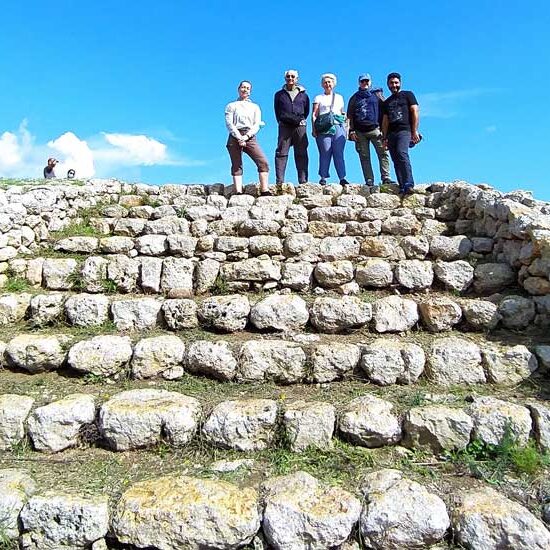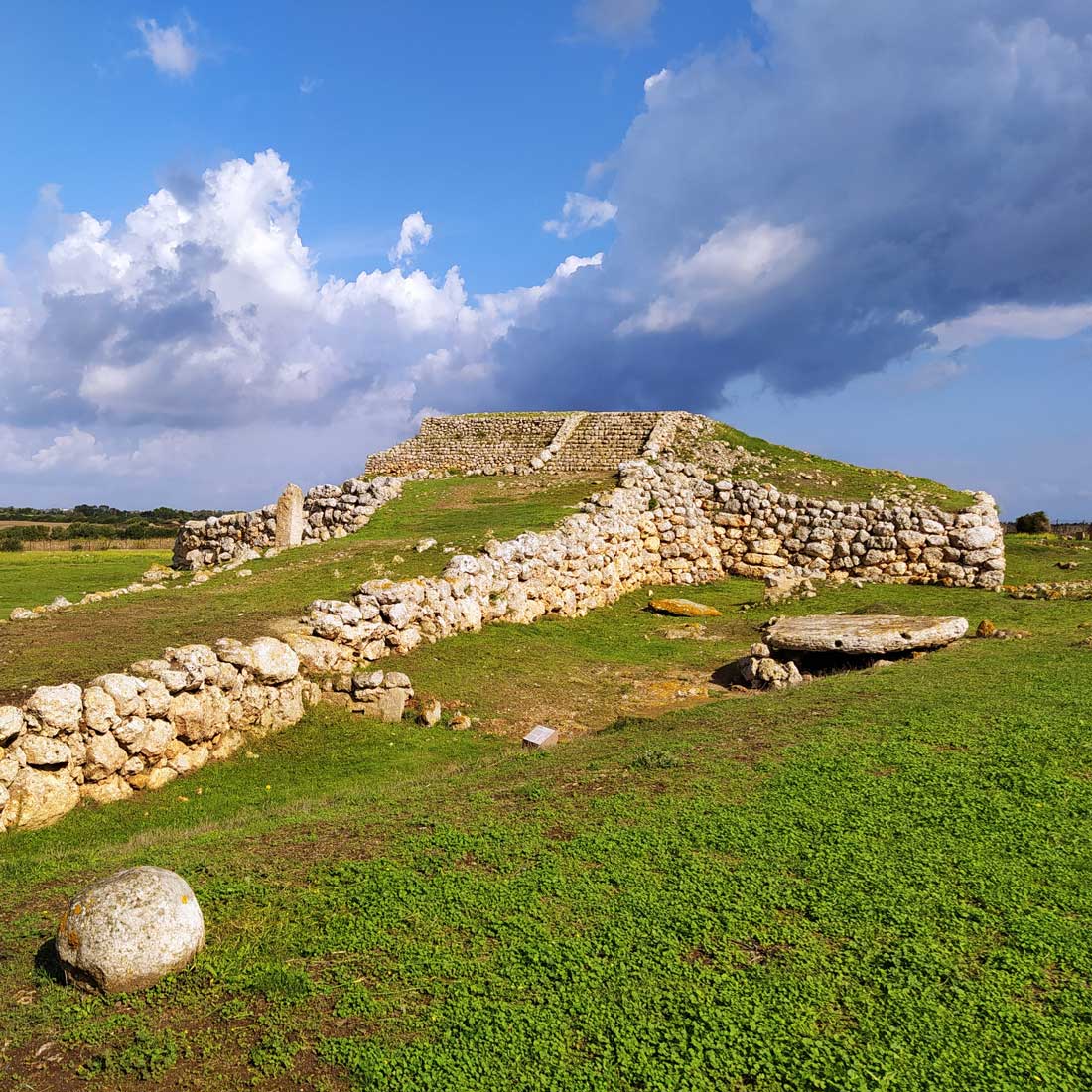The Ziqqurat of Monte D’Accoddi
A unique monument in the Mediterranean basin, this most sacred expression of pre-Nuragic civilisation is just a few kilometres from Sassari in the island’s northwest
The pre-Nuragic sanctuary stands in the centre of Nurra, in the territory of Sassari, eleven kilometres from the capital of the north of the island. The monument played a central role in society of the time, being the culmination of the evolution of a complex developed from the second half of the 4th millennium BC. The altar is the superimposition of two phases, that of the ‘red temple’, in the final Neolithic period (3500-2900 BC), and the following ‘terraced temple’, in the Aeneolithic period (about 2700 BC), as part of the Abealzu-Filigosa culture. In the first phase, several villages of quadrangular huts were part of a ceremonial hub, including a Domus de Janas necropolis and alongside the Santuario, in their original positions, are an elongated menhir (four and a half metres high), an enormous slab with seven holes (perhaps use to tie up victims) and boulders of spheroidal stone, one of five metres in circumference. All the stones served a specific purpose in the sacrificial rituals. At the end of the final Neolithic period, the people of the Ozieri culture built a platform in the shape of a pyramidal trunk, with sides at the base extending 27 metres, above which stood a rectangular room with surfaces plastered and painted in ochre and traces of yellow and black. Of the sacred area remain the floor and remnants of a perimeter wall. Around 2800 BC, the structure of the ‘red temple’, abandoned for about two centuries, was buried under a colossal filling of earth, stones and limestone marlstone, in turn ‘covered’ with large blocks of stone. A new large terraced pyramidal platform was built, with sides longer than the previous one and accessible from a ramp that was forty metres long and thirteen to seven metres wide. The second sanctuary is reminiscent of the ziqqurat with an ‘open-air’ altar. The structure occupies 1,600 square metres, rising up almost six metres (originally perhaps eight). Inside is an unexplored room. Perhaps, as in Mesopotamia, it contains the sacred bed where the ritual of regeneration of life and fertility of the earth was carried outThe building retained its religious function for a millennium. At its base, remains of sacred meals and objects used in propitiatory rituals were discovered. The site was abandoned at the beginning of the ancient Bronze Age (1800 BC) and occasionally reused for burials.
Fill in the form,
we will send you a quote
To download the pdf click here
-
Destination
-
Departure
Cagliari -
Included
Guided tourRound trip transportation -
Not Included
Certified multilingual guideLunch on board

Source wikipedia
















